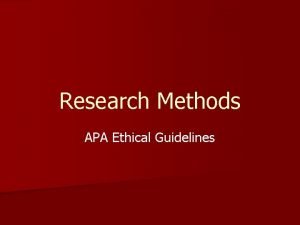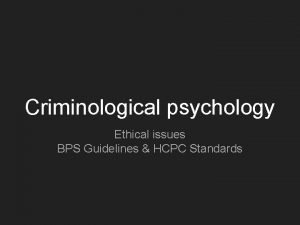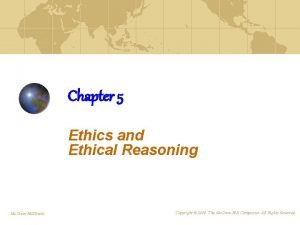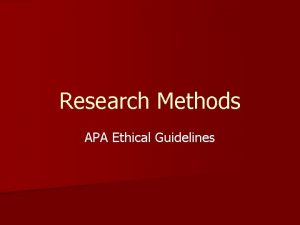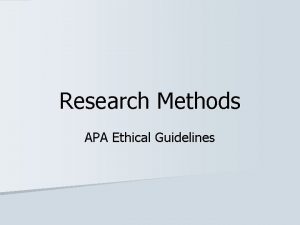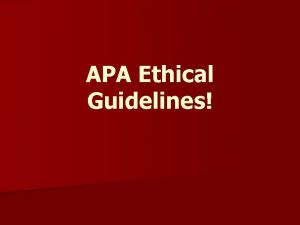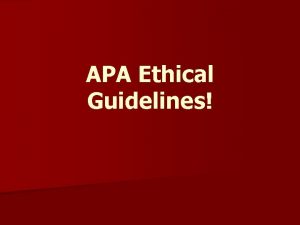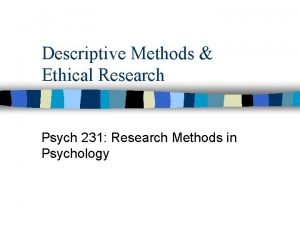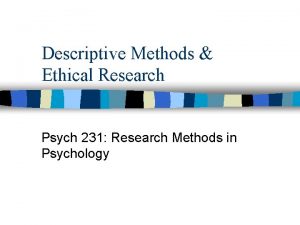Research Methods APA Ethical Guidelines n The APA














- Slides: 14

Research Methods APA Ethical Guidelines

n The APA – American Psychological Association n Responsible for setting the ethical guidelines for human and animal research. n The IRB – Institutional Review Board n Part of the APA responsible for reviewing research proposals for ethical violations and/or procedural errors.

Human Research n. Research involving human subjects must meet the following standards:

n 1. Informed Consent –Participants must know that they are involved in research and give their consent.

n 2. Coercion –Participation in a research study must be voluntary.

n 3. Anonymity/Confidentiality – The participant’s privacy must be protected. No identities and actions may be revealed. A researched must not share any results that could match a participant and their specific responses. A researcher will not identify the source of any data as well.

n 4. Risk –Participants cannot be placed at any significant mental or physical risk.

n 5. Debriefing Procedures –Participants must be told the purpose of the study and provided with ways to contact the researcher about the study results.

Animal Research n. Ethical studies using laboratory animals must meet the following requirements:

n 1. The must have a clear scientific purpose. –The research must answer a specific, important scientific question. Animals are chosen based on their ability to help answer the question proposed.

n 2. The animals must be cared for and housed in a humane way.

n 3. The animal subjects must be acquired in a legal manner. – The animals used in the experiment must be purchased from accredited companies, and if trapped in the wild, they must be trapped in a humane manner.

n 4. The experiment must be designed with procedures in place that employ the least amount of suffering on the part of the animals.

 Apa ethical guidelines for research
Apa ethical guidelines for research Apa ethical guidelines
Apa ethical guidelines Ethical guidelines for computer professionals
Ethical guidelines for computer professionals Hcpc guidelines psychology
Hcpc guidelines psychology Presenting another person's language or ideas as one's own
Presenting another person's language or ideas as one's own British psychological society ethical guidelines
British psychological society ethical guidelines How to avoid incremental plagiarism
How to avoid incremental plagiarism Perbedaan ethical dilemma dan ethical lapse
Perbedaan ethical dilemma dan ethical lapse Ethical reasoning model army
Ethical reasoning model army Perbedaan ethical dilemma dan ethical lapse
Perbedaan ethical dilemma dan ethical lapse Ethical decision making and ethical leadership
Ethical decision making and ethical leadership Ethical reasoning
Ethical reasoning Fabrication of wax pattern
Fabrication of wax pattern Early childhood research quarterly
Early childhood research quarterly Ethical considerations in experimental research
Ethical considerations in experimental research
